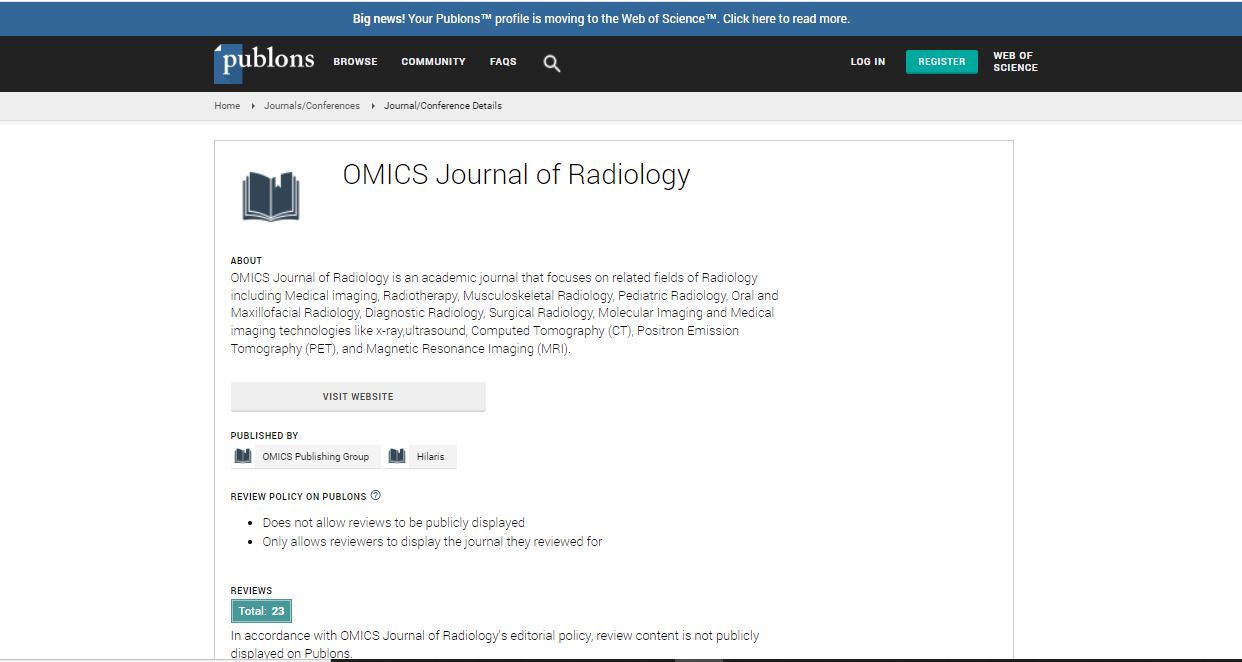Our Group organises 3000+ Global Conferenceseries Events every year across USA, Europe & Asia with support from 1000 more scientific Societies and Publishes 700+ Open Access Journals which contains over 50000 eminent personalities, reputed scientists as editorial board members.
Open Access Journals gaining more Readers and Citations
700 Journals and 15,000,000 Readers Each Journal is getting 25,000+ Readers
Google Scholar citation report
Citations : 551
Journal of Radiology received 551 citations as per Google Scholar report
Journal of Radiology peer review process verified at publons
Indexed In
- Index Copernicus
- Google Scholar
- Open J Gate
- Genamics JournalSeek
- ResearchBible
- Electronic Journals Library
- RefSeek
- Hamdard University
- EBSCO A-Z
- OCLC- WorldCat
- SWB online catalog
- Virtual Library of Biology (vifabio)
- Publons
- Geneva Foundation for Medical Education and Research
- ICMJE
Useful Links
Share This Page
Neuroradiological and neurosurgical management of arteriovenous malformations of the foramen magnum
2nd International Conference on Neuroscience, Neuroimaging & Interventional Radiology
Raimund Firsching
Universitaetsklinik Fuer Neurochirurgie, Germany
ScientificTracks Abstracts: OMICS J Radiol
Abstract
Introduction: Vascular malformations within the foramen magnum and upper cervical canal are rare. Diagnosis is cumbersome and neurosurgical treatment is hazardous. We report on 6 cases. Methods: Age ranged from 37 to 77 years, three male and two female patients. Diagnosis at the time of referral included normal pressure hydrocephalus (one case), subarachnoid haemorrhage (two cases) and spinal stenosis (two cases). Imaging techniques included magnetic resonance (MR) imaging, MR angiography and highly selective segmental cervical angiography with micro catheters. Surgery was performed with electroneurophysiological monitoring. Results: Angiography revealed three arteriovenous fistulae within the foramen magnum, a giant vertebral artery aneurysm within the foramen magnum and two patients with an intradural arteriovenous malformation at the C2 level. The fistulae and the aneurysm were occluded using microclips. The edema of the cervical myelon of the patients with the fistulae resolved with marked recovery of gait. The hydrocephalus of the patient with the giant vertebral aneurysm also resolved with good recovery. The arteriovenous malformations at the C2 level were coagulated. One of these patients subsequently needed a ventriculoperitoneal shunt. The other suffered some transient weakness of the ipsilateral arm. Conclusion: In all patients suspicion of a vascular malformation was raised after an initially misleading diagnosis. The decisive hint came from scrupulous evaluation of MR imaging data but diagnosis was only confirmed with selective arteriography. For proper identification of the malformation and planning of the surgical procedure a highly selective segmental spinal arteriography appears mandatory.Biography
Raimund Firsching LRCP (LOND.) MRCS (ENGL.) was born Dec. 12th 1953 born in Bochum, West Germany. 1972 beginning studies at medical school of the University of Bonn, 1979 graduation from medical school Bonn, dissertation. 1980, conjoint exam in London, Queen Square, on the register of the General Medical Council, United Kingdom. 1981 beginning neurosurgical training at the University of Cologne, 1986 research fellow at the University of Texas, Health Science Center at San Antonio, Texas, USA, division of neurosurgery, chief: Dr. Story 1987 board certified neurosurgeon at the University of Cologne, Germany, 1988 habilitation for the field of neurosurgery, admitted to the Medical Faculty of the University of Cologne. 1992 – 1994 Vice chairman of the Department of Neurosurgery at the Ruhruniversitaet in Bochum. 1995 until now Neurosurgeon-in-Chief and Professor at the Universitaetsklinik fuer Neurochirurgie Magdeburg. 1997 until 2013 nominated honorary judge of the state professional court of Magdeburg, capital of the state of Saxony Anhalt, Germany. 2017 congress president of the Deutsche Gesellschaft fuer Neurochirurgie at the national convention of neurosurgery in Magdeburg. Married to Dr. Ibsen-Firsching, a pediatrician, since 1981, 3 children.

 Spanish
Spanish  Chinese
Chinese  Russian
Russian  German
German  French
French  Japanese
Japanese  Portuguese
Portuguese  Hindi
Hindi 
